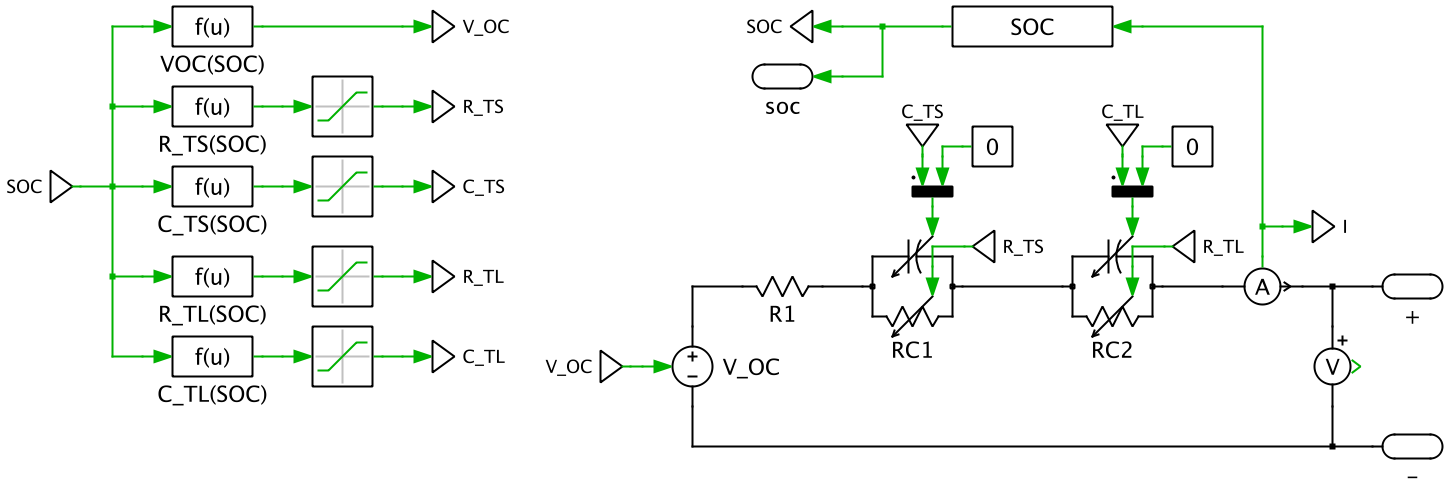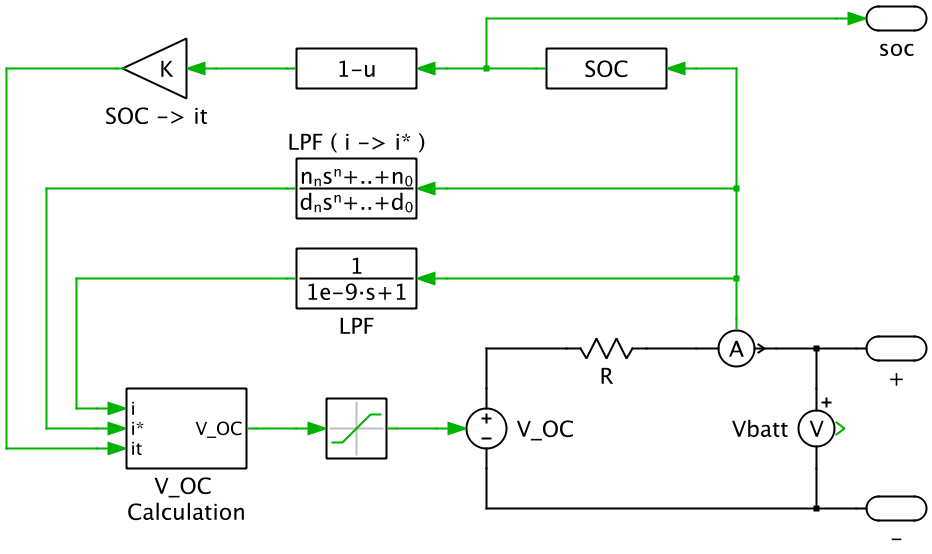Lithium-ion (Li-ion) batteries play an integral part in electrical systems such as those in electric vehicles, cordless power tools, and energy storage systems. Li-ion batteries are often modeled as ideal constant voltage sources in these circuits. However, as the battery is charged and discharged, the current and voltage (I-V) of the battery changes. These effects are not reflected in the models with a constant voltage source. To optimize the overall system performance, the I-V characteristics of the battery must be considered. Further, these models can be used to benchmark different charging and State of Charge (SOC) estimation algorithms at the system level. This report describes two circuit-based Li-ion cell models and their advantages and limitations. A battery pack is developed using each cell model and connected to the output of a buck converter. Simulation results for charging a battery pack with a constant current, constant voltage (CCCV) charging algorithm are discussed.
Li-ion Models
RC-chain-based Li-ion model
This Li-ion model consists of a SOC-dependent electrical circuit using RC-chains to enable battery transient behavior modeling during load current step changes. The implementation using two RC-chains provides a good balance between simulation accuracy and model complexity. Additional RC-chains can be used to improve the accuracy, however, this adds to the model’s complexity and adversely affects the simulation speed. A major drawback to this implementation is that to determine the SOC-dependent parameters (VOC, R1, RC1 and RC2), extensive tests must be conducted on the battery of interest.

Resistor-only Li-ion model
The RC-chain-based battery model provides an electrical model that can be used to accurately reflect battery transient behavior during changes in load current. However, there remain a number of challenges associated with this model. A major issue is the extraction of the parameters using experimental or manufacturer data, which may not be available. A resistor-only based model has the advantage of using readily-available information from battery data sheets to implement the macro-level non-linear I-V relationship exhibited by Li-ion batteries that are important for system-level simulations. This avoids the need to obtain further data from manufacturers or measurements taken in the lab. The R-only implementation results in faster simulation speeds as it doesn’t contribute the time constants associated with the RC chains. The R-only model does not consider the short and long transient time constants associated with a step in load current, however, in contrast with the RC-chain-based implementation.

Requirements
PLECS Blockset
- PLECS Blockset 3.7 or newer
- MATLAB 7.5 (R2007b) newer
PLECS Standalone
- PLECS Standalone 3.7 or newer
Download
The documentation in PDF format can be downloaded here. You can download the example models for PLECS Blockset here and for PLECS Standalone here.
